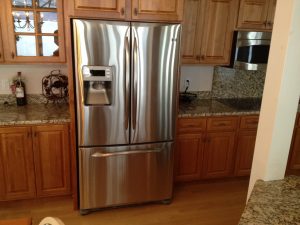Green Home Building is about Material and Operational Efficiency
By Mark J. Donovan
|
|
Size does matter when building a green home. The main objective in building a green home is to be resource efficient, both in terms of construction material and operational resource requirements, e.g. monthly gas, electric, and water bills. Consequently, if you’re thinking of building green you need to steer away from those 4000+ square foot McMansion house plans. Instead, you need to focus on efficiency and your real personal living space requirements.
Assess your Family’s Living Requirements When considering building a green home, it is important you first properly assess your family’s needs. For example, if you are a 2-person family, or soon to be, then you probably don’t need a 3 or 4 bedroom home. |
Also, evaluate what rooms you most frequently use in your current home. If you’re like most, you use the kitchen, a bedroom/bath, and a family room most of the time.
The Upsides of a Smaller Home
Though the concept of thinking smaller may initially sound appalling to you, there are a number of upsides to a smaller home. First, think of a Porsche. When building a smaller home you can “Porsche Out” the home due to the cost savings of building fewer square feet.
Building up, versus building out, can also help to create the high ceilings and even loft areas. Building up also has the advantage of saving on both construction and operation costs. Also, position your home on the property to take advantage of solar light and passive solar heating.
| Throw out the Old and Unused Possessions
Another way to reduce the impact of moving into a smaller home is to eliminate some of your possessions and clutter before moving in. Evaluate what possessions you really use and don’t use in your home. Most of us are natural packrats and keep everything we ever purchased. By eliminating old and unused possessions we can dramatically reduce our space needs. By going through this exercise before moving into a smaller, greener home, we can keep the new green home open and airy feeling. Green Construction Materials When building a green home, there are several major focus areas to concentrate on. First, use highly efficient heating and cooling systems. |
 |
Second, use energy and water efficient appliances and bathroom fixtures.
Third use energy efficient lighting. LED and halogen lighting can provide significant energy savings over traditional incandescent lighting. In addition, they can really accent a home’s appearance.
| Fourth, make sure the home is very well insulated, including walls, ceilings, attics, basements, and outside foundation walls.
Fifth use wood wisely and efficiently. Though wood is a renewable resource, it still needs to be used efficiently to enable the proper insulation of the home. Sixth, use low-e glass windows. Finally, a green home should also include the use of recycled materials wherever possible. For example, old wood flooring material may be able to be salvaged and refinished in the new home. Composite decking is another great example. Composite decking is manufactured using a combination of wood and old recycled plastic material. |
|
Going green is smart and the wave of the future in home building. With energy costs continuing to rise precipitously, all of us need to do more to conserve our natural resources. Part of going green is thinking smaller, but having a smaller home doesn’t necessarily have to be a bad thing. With careful planning a smaller home can be just as comfortable a living space as a larger one, at a fraction of the cost.
For more help on building a home addition, see HomeAdditionPlus.com’s Home Addition Bid Sheets. Our Home Addition Bid Sheets provide you with the knowledge and information on how to plan a home building project, and what to look for when hiring contractors. They also include detailed cost breakdown tables and spreadsheets for estimating your own new home construction building costs.
Free Home Addition Price Quotes with No Obligation!
Fill out our 3-5 minute quick and easy form, and receive a free price quote on a home addition from one of our prescreened and licensed home addition contractors. This process is free and there is no obligation to continue once you receive your home addition price estimate.

